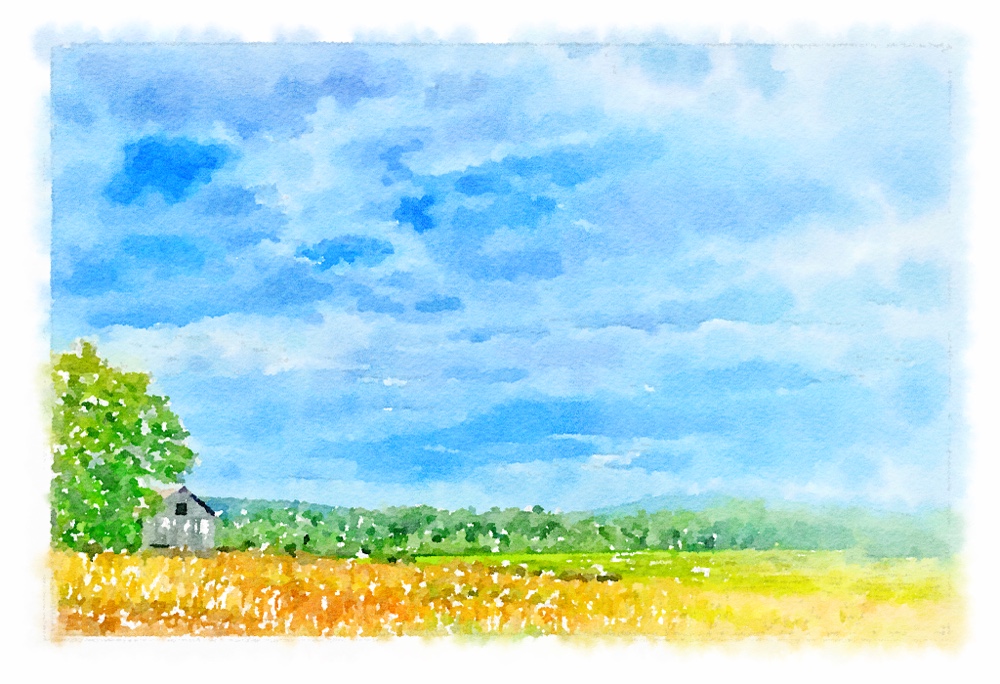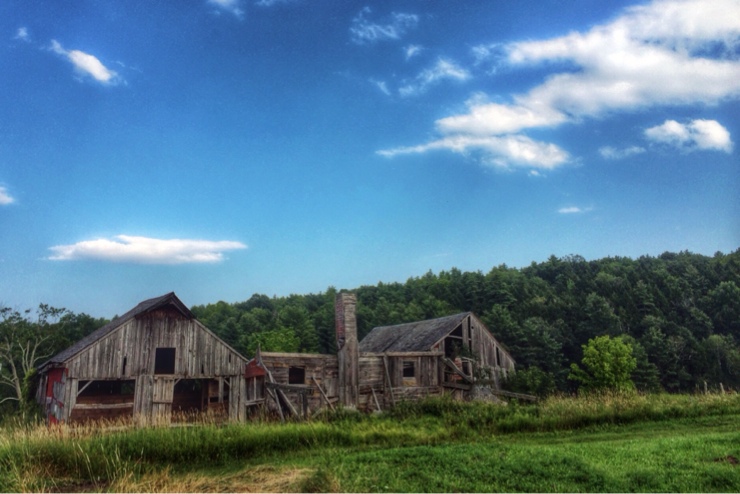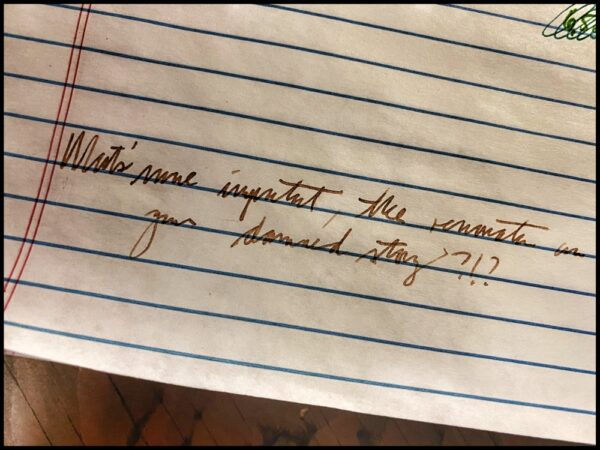Swapping December for January signals that we’re four months into Rosslyn’s icehouse rehabilitation which, in turn, means that I’m four months overdue for a look at (or perhaps the first of several looks at) my love of barns. Truth be told, I’m a bit of a barnophile. And, given my weakness for wabi-sabi, I’m especially keen on bygone barns.

By “bygone barns” I’m conjuring an entire class of rural farm and utility buildings belonging to an earlier time. Agrarian hand-me-downs. Think of a barn vernacular with classic lines, practical design, form following function, wearing age and even obsolescence with pride,… I’m even smitten with buildings so dilapidated that they’ve been reduced to their skeletal essence by the forces of nature. Sunlight, moonlight, weather, wildlife, and vegetation permeate these carcasses. The sparse assembly of materials — beaten by the elements for more years than anyone alive can definitively claim to know — endure erect, monumental, lavishly adorned with forgotten functions and the patina of passing time.
My romantic heart and my wabi-sabi aesthetic cling conspiratorially to the possibility of resuscitating, reimagining, and repurposing. Meanwhile the rights of rewilding attempt to discipline my disposition; I ache for the victory of natural forces over human will, the return of these materials to the earth. This tension between between revitalizing and rewilding winds my wonder and perpetuates my desire.
Backcountry Barns Haiku Time torn, weatherworn byways by backcountry barns. Watercolor skies. (Source: Backcountry Barns)
It’s not uncommon for me to interrupt a bike ride in sight of a bygone barn, ostensibly to make a photograph (which I do), but often I’m still standing ten minutes, fifteen minutes later, still observing, often lost in a sort of contemplative gaze.
[Bygone] barn architecture, especially minimalist barns, patinated with weather and time, speaks to something practically primordial in me. My earliest hope when looking for North Country properties was to convert an old barn into a home. I looked at lots of backcountry barns, but I never made a match. (Source: Backcountry Barns)
Inevitably this lead us to farms, mostly no longer actively being farmed, vestiges of an early time, and earlier lifestyle.
I began looking at forgotten farms, bygone barns, meandering stone walls hemming in overgrown fields… (Source: Leaping & Untethering)

It was a romantic errand that exposed Susan and me to many fascinating properties.
Susan… shared my dream of an old farmhouse surrounded by open meadows with views and sunlight. She liked barns and was even receptive to my occasional flights of fancy about converting an old barn into a home. (Source: The Hunt for a Perfect House)
But the bygone barns in my mind and those we visited were failing to align.
Although a farm on the lake (especially an old barn that could be reimagined as a home) was proving an impossible ambition, our imaginations were piqued on several occasions…
A handsome slate roofed barn, still square after a century or more standing at the crest of an immense field just south of Westport, beguiled me for a while. I imagined a lofty open plan; exposed, rough hewn beams; magnificent views in all directions. But the seller was unable or unwilling to subdivide the field and barn from a much larger farm which included additional fields, an immense dairy barn, various other building for hay and equipment storage, a “pond” for storing cow manure and a large square farmhouse with cupola. And in the end it was a relief to Susan, because, after all, this magnificent barn did not stand on the shores of Lake Champlain. (Source: The Hunt for a Perfect House)
Gradually our search evolved. And shifted.
Some day I still hope to explore the barn vernacular, perhaps in a modern and somewhat interpretive way. (Source: Backcountry Barns)
I wrote that last sentence about a year and a half ago. And, while it’s still 100% accurate, I’m also allowing this curious quest to inspire the icehouse rehab which is, after all, a bygone barn, albeit a diminutive one, purpose built for storing ice. Watching the building get stripped back to its oldest and boldest elements, honoring the legacy of a functionally perfect building that has outlived its functional utility, searching for the simplest and purest path forward, restraining the instinct to disguise the building’s age, and summoning the bygone barn’s story from the dusty darkness. It would not be absurd to compare this last four month’s endeavor to a protracted meditation.
In reworking my notes for this post — notes is too vague; perhaps field notes is closer, or travelogue — I come across a hastily jotted note.

I’d written the question to myself as if posed by another, perhaps one of the many capable collaborators on this project. I don’t recall when or why I wrote this, nor am I certain why this seemingly frustrated inquiry was posed in this way. It’s as if I imagined Pam or Hroth or someone else, exasperated, almost pleading to simplify the journey, our journey, to focus fully (and exclusively) on rehabilitation of this bygone barn.
What’s more important, the renovation or your damned story?!?
I’m only about halfway through these notes, but this feels like the right place to pause. I’ll continue this reflection tomorrow, but for now I’ll prime the contemplative pump with an intriguing short film by Matt McFarling called “Bygone Barns” that the inimitable Katie Shepard discovered while helping me sort my jumbled thoughts.
Thanks, Katie!
What do you think?